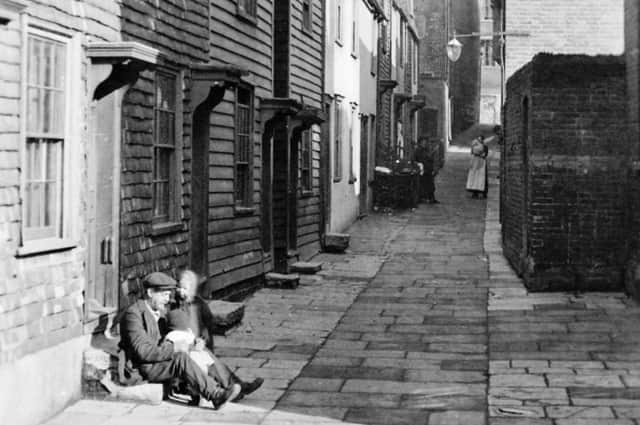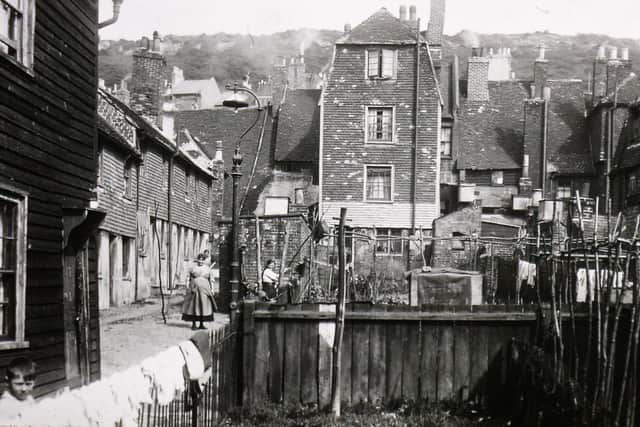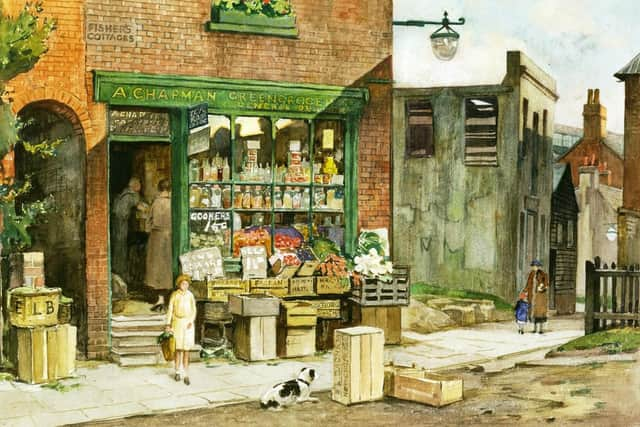When Hastings Old Town was considered a slum


He writes: In last week’s Observer I described how the creating of today’s Hastings sewage system followed the revealing in 1850 of the large number of slums in the Old Town. In the late 1930s some of those same houses played a key role in Hastings Council’s demolition of many properties to make way for today’s Bourne Road running through the heart of the Old Town.
By the mid-1920s the increasing amount of traffic highlighted how inadequate the High Street and All Saints Street were in handling the increasing amount of traffic using the A259. The only other possible route for through-traffic was via Mount Pleasant Road and Queens Road, but the town centre was already too congested, so that idea was not pursued.
Advertisement
Hide AdAdvertisement
Hide AdSo in 1930 the Council decided that the only option was to cut a new road through the middle of the Old Town, leaving the High Street and All Saints Street as they were. But this was put on hold, as it would be very expensive in purchasing all the many properties involved, and it was also strongly opposed because it would destroy the character of the Old Town.


However, in 1933 the Ministry of Health ordered all local authorities to prepare new slum clearance programmes, and Hastings Council came up with just one: all the buildings along the line of the 1930 Old Town road plan. This included 191 houses, the homes of 739 people. And this scheme would be made affordable because instead of paying the market value of the buildings, the Council would only have to pay their site value as they would all be labelled ‘slums’ – which most were not.
But to get away with what Councillor Tingle described as this “act of robbery”, the Council had to pretend that the homes actually were all slums, and that there was not a road proposal. In 1934 the Ministry eventually agreed, and the Council started building new houses for most of the dispossessed, in Bembrook, Red Lake and Hollington. Only 176 of the evicted ‘slum’ residents were to be rehoused in the Old Town, mostly in the flats alongside the Bourne Road. All these evicted people would become Council tenants paying high rents, whereas previously many had owned their own homes.
Advertisement
Hide AdAdvertisement
Hide AdFish-seller Henry Johnson owned 4 Winding Street, an apparently sound house worth £300 on the market. But the Council only offered just £15. He refused and went to court, but the Council did not act illegally when they evicted him and his family in July 1938.


By 1939 much of the land had been cleared and new housing had been built, but the war held up the road scheme. The Council did little more clearance until the late 1950s, and the Bourne Road was not completed until 1963. The full 1930s story is in my book Fishermen of Hastings.